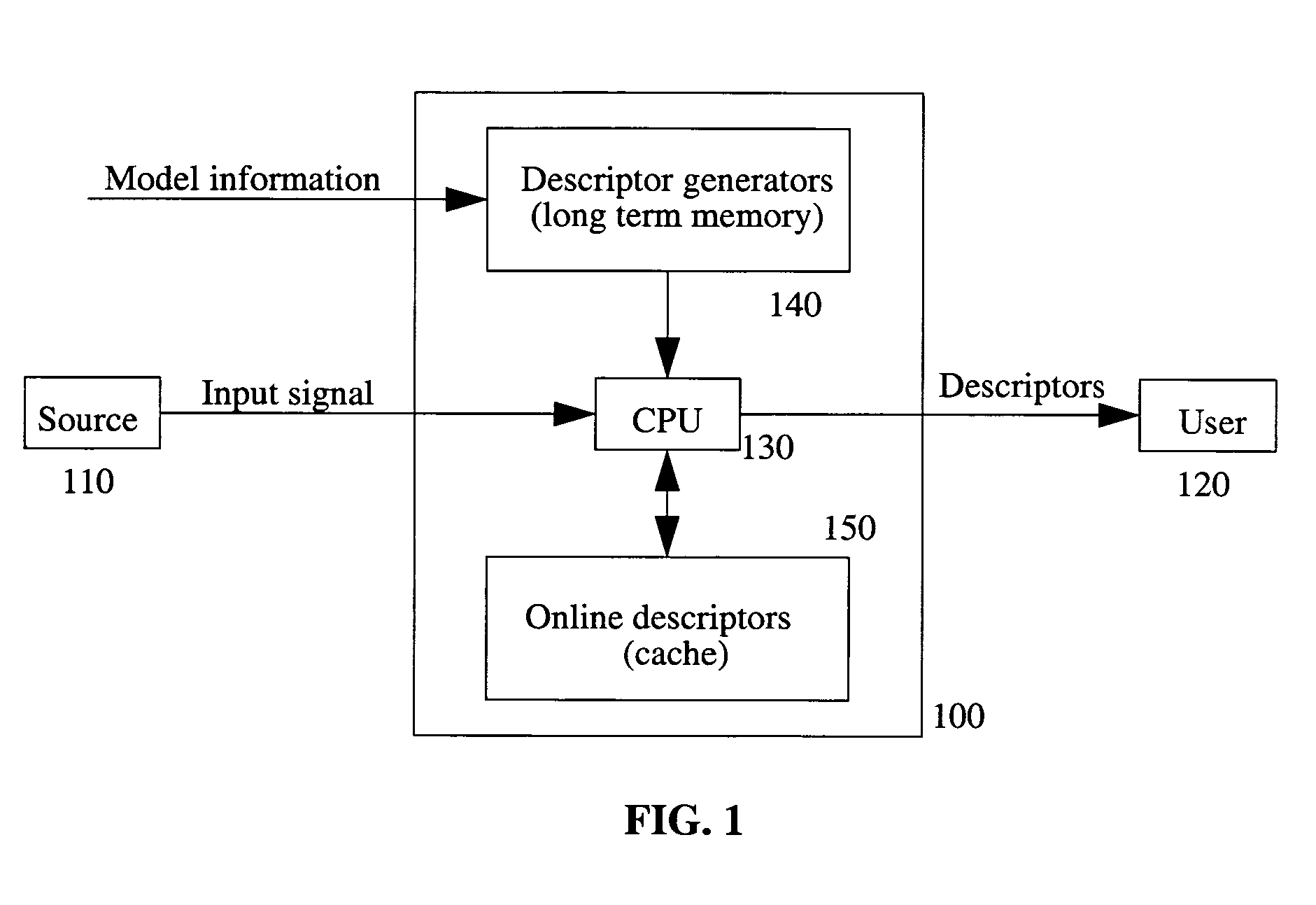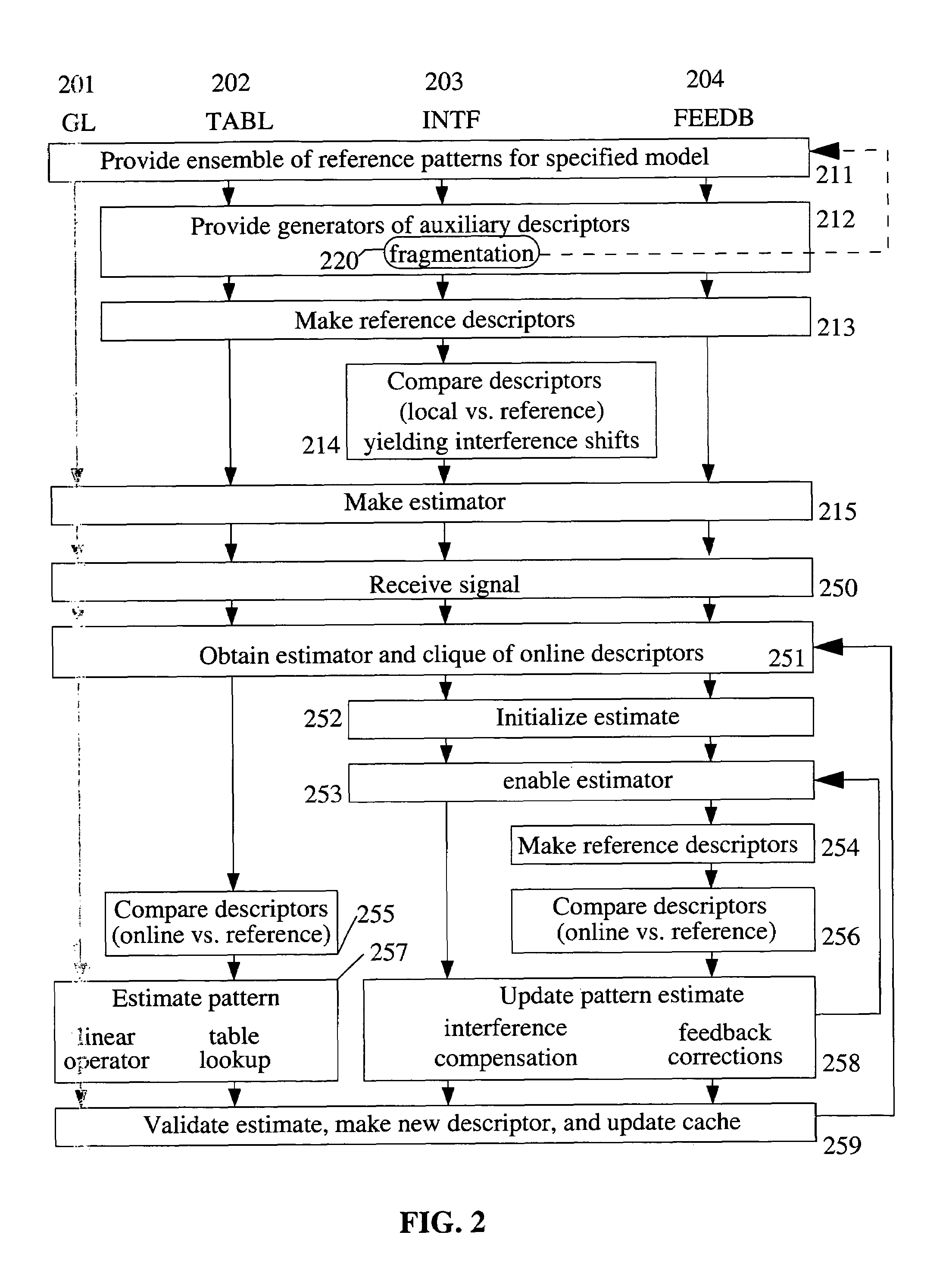Hierarchical method and system for pattern recognition and edge detection
a pattern recognition and edge detection technology, applied in image enhancement, image analysis, instruments, etc., can solve the problems of inaccuracy of important parameters, high computational requirements, and the location of edges, so as to improve the current estimate, and improve the detection performance. , the effect of improving the current estima
- Summary
- Abstract
- Description
- Claims
- Application Information
AI Technical Summary
Benefits of technology
Problems solved by technology
Method used
Image
Examples
Embodiment Construction
Notation and Terminology
[0043]1. I: the input signal received by the signal processing system. The value of the signal at a “point” (or “site”) p is I(p). In some embodiments, I is an image and p=(x,y).[0044]2. U: the set of points, or domain on which the signal is defined, or a subset of it.[0045]3. V: the signal codomain, i.e., the set of values the signal can take on, e.g. V=R.[0046]4. VU: set of signals with support U.[0047]5. Descriptor: a piece of recordable data; it may comprise an estimated model parameter; or, it may be part of the output of a processing or filtering operation performed on the signal.[0048]6. Estimator: means for estimating a model parameter or a pattern. An incremental estimator in one that requires an initialization and produces an updated estimate. An autonomous estimator does not require initialization or provides one internally. An estimator can be either iterative or direct (i.e., non-iterative). An alternating estimator comprises a stage where parame...
PUM
 Login to View More
Login to View More Abstract
Description
Claims
Application Information
 Login to View More
Login to View More - R&D
- Intellectual Property
- Life Sciences
- Materials
- Tech Scout
- Unparalleled Data Quality
- Higher Quality Content
- 60% Fewer Hallucinations
Browse by: Latest US Patents, China's latest patents, Technical Efficacy Thesaurus, Application Domain, Technology Topic, Popular Technical Reports.
© 2025 PatSnap. All rights reserved.Legal|Privacy policy|Modern Slavery Act Transparency Statement|Sitemap|About US| Contact US: help@patsnap.com



